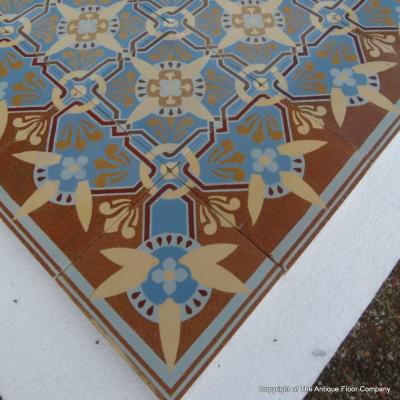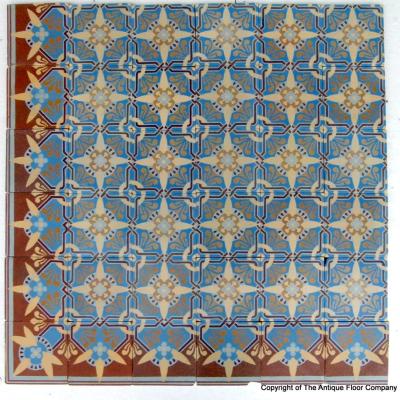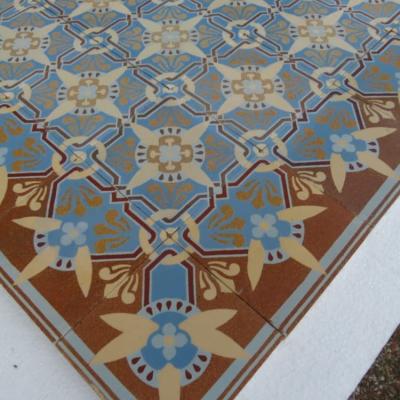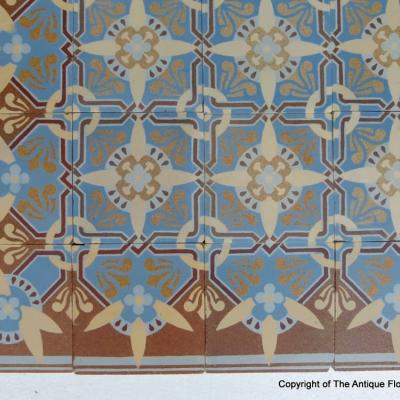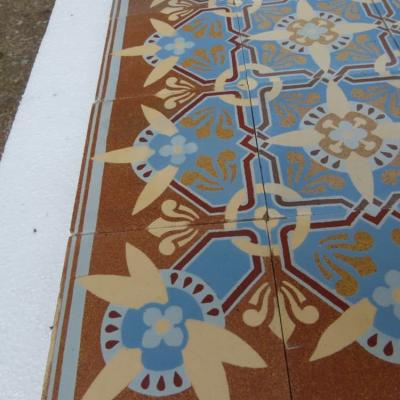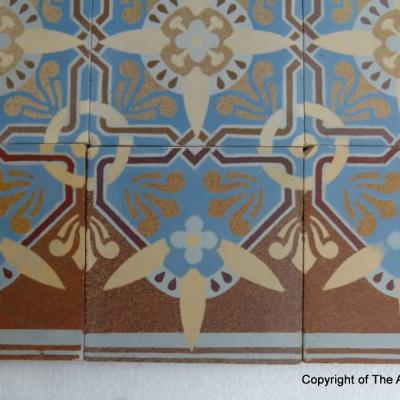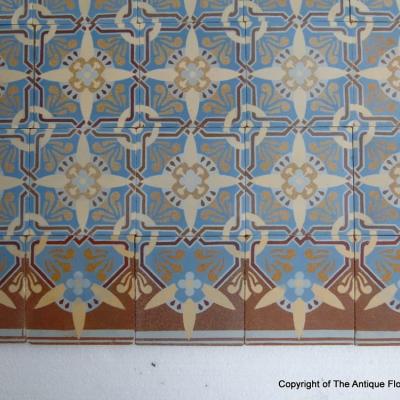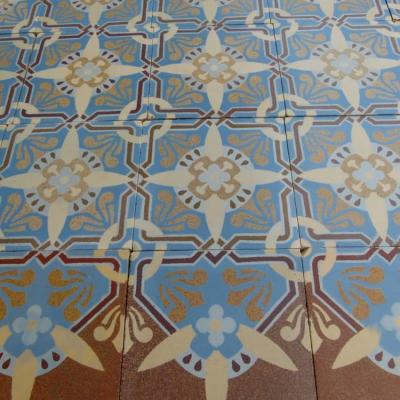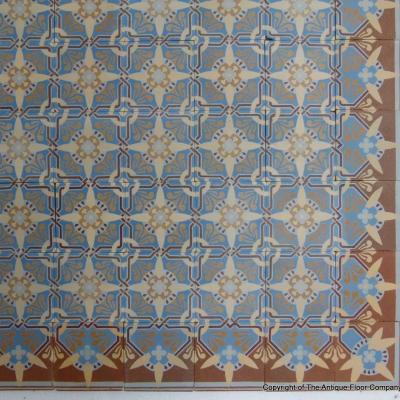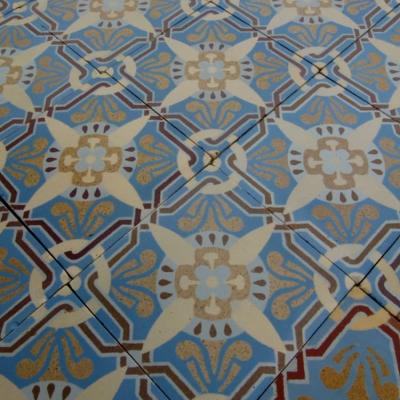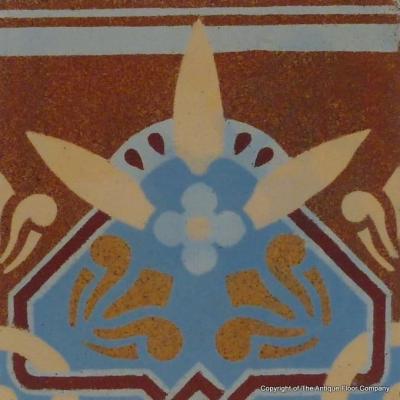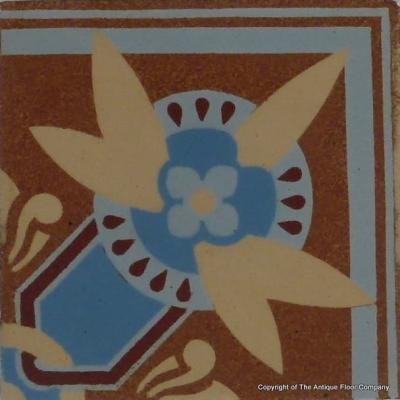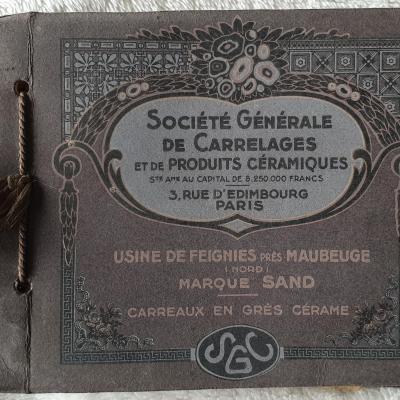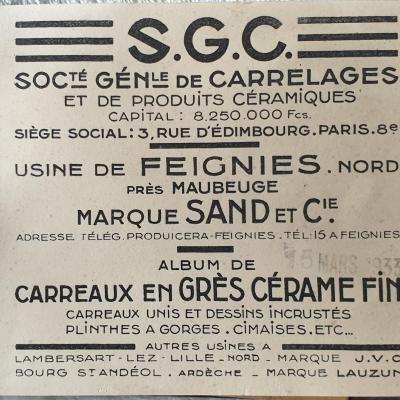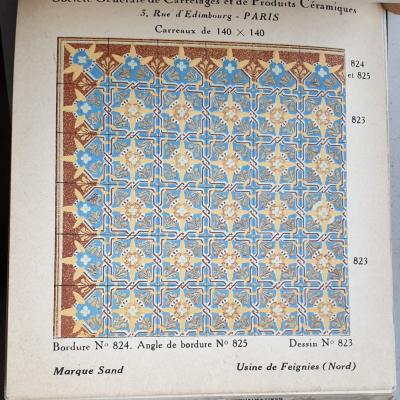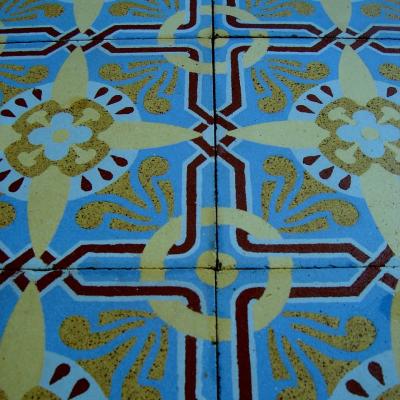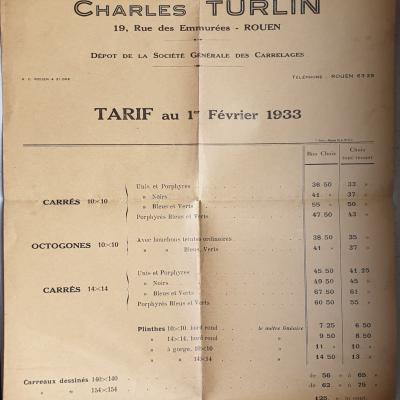A 9.9m2 / 107 sq ft French art deco ceramic - 1933
A 9.9m2 / 107 sq ft French ceramic floor, manufactured in 1933 by Societe Generale. de Carrelages et de Produits Ceramiques (SGC). For provenance, we include in the photo gallery a scan from their original catalogue presenting the floor. The tiles are 14.2cm / 5.6 inches sq and c.+/-13mm / 0.5 inches thick.
These tiles embody the refined elegance and symmetrical precision characteristic of the Art Deco movement, with a bold interplay of geometric motifs and streamlined ornamentation. The composition is highly structured, forming a seamless grid of interlocking patterns that celebrate order, luxury, and modern design.
Each tile contributes to a larger tessellated design dominated by stylized, cross-like forms rendered in vibrant shades of sky blue and soft beige, outlined with crisp lines in dark brown and golden ochre. The precision of these intersecting forms reflects the Art Deco fascination with machinery, architecture, and industrial aesthetics. At the centre of each cross, circular medallions with four-petaled floral emblems alternate in cream and ochre, subtly blending organic motifs with mechanical symmetry—a hallmark of early 20th-century decorative innovation.
Framing the composition is a refined border that draws on the same geometric vocabulary but shifts into deeper tones of bordeaux and copper brown, grounding the pattern and enhancing its visual drama. The outer edges introduce angular bursts and stylized blue floral stars, radiating outward like decorative flourishes often seen in Art Deco architecture and interior design.
The colour palette—composed of cool blues, warm ochres, polished browns, and soft neutrals—evokes a sense of opulence without excess, achieving visual richness through symmetry, repetition, and subtle contrast. These tiles reflect the Art Deco ethos: modern yet ornamental, sleek yet expressive, merging craftsmanship with the spirit of progress and sophistication. Handmade in small batches, the colours are crisp and there is some significant tonal variation amongst the tiles, all adding to their charm. This is especially evident in the bordeaux star shape in the motif where the slip colour moves from a bordeaux to a copper brown. This can best be seen in photos 1, 4 and 10 in the gallery.
In excellent condition, this is a good quality ceramic with a consistent and deep slip. The tiles have been completely cleaned of their old mortar to the reverse, cement joints from their sides, and wax and dirt from their faces. A highly fired ceramic, it can be laid inside, with underfloor heating systems, or outside; on a path or patio, where resistance to high summer and sub-zero winter temperatures will not affect the tiles robustness.
Tile quantities, give or take one or two:-
FIELD tiles – 445 - 9m2 / 96.5 sq ft
LARGE BORDER tiles - 42 - 0.85m2 / 9.1 sq ft or 6 linear metres / 19.7 linear feet
plus c.25 free reject field tiles for use as offcuts.
This is one of three floors reclaimed from the same house, the others also being of the same manufacturer and bearing the same art deco DNA. They can be seen by clicking here and here
NOTE Antique tiles were most commonly made in single or two tile moulds. Before current computer automation methods their moulds were made by hand and the colour slips mixed by eye. Kiln temperatures could also be variable, as could the firing time. The result is that tiles often display subtle size and thickness variations and there can be tonal variations in colours, owing to the slip mixing and/or firing time. All of this makes these handmade tiles unique and adds to their charm. Some floors display their subtle variations in size and tones, some not, but when photographing we always take a random section of the floor so that it is representative of the whole. A tiler should always dry lay a section of the tiles to familiarise himself with them before starting to fix lay.
CE127 MAD37



